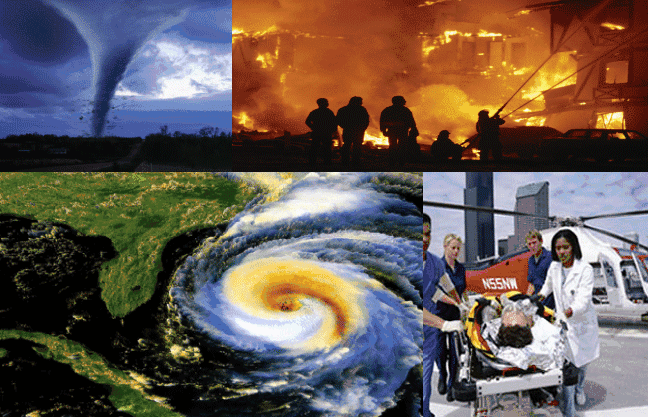
[cs_content][cs_section parallax="false" style="margin: 0px;padding: 45px 0px;"][cs_row inner_container="true" marginless_columns="false" style="margin: 0px auto;padding: 0px;"][cs_column fade="false" fade_animation="in" fade_animation_offset="45px" fade_duration="750" type="1/1" style="padding: 0px;"][x_custom_headline level="h2" looks_like="h3" accent="false"]1. You probably don’t think you need to be prepared and you are wrong.om Headline[/x_custom_headline][cs_text]Most of us haven’t encountered a fatal emergency. So we don’t tend to think about emergency preparation. We are in denial.[/cs_text][cs_text]
[/cs_text][cs_text]
[/cs_text][cs_text]
[/cs_text][cs_text]
[/cs_text][cs_text]I was at a TGIF Restaurant recently with my wife, and we asked the waitress for our check. When the waitress didn’t return, we called the manager for help. A half an hour later we still hadn’t gotten a check, but an EMS team had arrived. The manager had found our waitress choking on something in the kitchen; he had called 911.[/cs_text][cs_text]Unfortunately, it was too late. The waitress died that day on the floor of the back kitchen.[/cs_text][cs_text]Even proprietors of more injury-prone businesses can have a mistaken view of the need for emergency preparation[/cs_text][cs_text]I was talking to my Karate instructor Saul, owner of the American Karate Academy in San Diego. He carries an automated external defibrillator (AED) box onsite but no AED machine. Karate is an impact sport and can cause injury. Saul stated that "he had never had a medical emergency in 27 years of teaching karate."[/cs_text][cs_text]That is a great thing. But when it comes to a medical emergency and disasters, it only takes one.[/cs_text][x_custom_headline level="h2" looks_like="h3" accent="false"]2. Being At Work Or in a Store Doesn’t Mean You Are Safe.[/x_custom_headline][cs_text]Many companies meet the legal and governmental requirements for emergency or disaster preparation. And that’s it. They want to focus on their core activities.[/cs_text][cs_text]For example, if you have a medical emergency in a grocery store, the policy is that no employee is allowed to respond but the manager. The first four minutes in a cardiac or airway emergency are the most important to long-term survival. You can imagine how long it might take to find a manager in a grocery story.[/cs_text][x_custom_headline level="h2" looks_like="h3" accent="false"]3. Life-Saving Training and Equipment Is Not Expensive.[/x_custom_headline][cs_text]For a business, the investment of being prepared is not that expensive at all. The cost of professional training once every two years and buying an Automatic External Defibrillator (AED) that will be monitored and maintained is about $45.00 per month. That is a small price to pay compared to the cost of being sued, insurance costs and every other factor that will lead to cleaning up a disaster.[/cs_text][x_custom_headline level="h2" looks_like="h3" accent="false"]4. You Will Probably Be “the Bystander” in an Emergency. Bystanders Save Lives With 911 Support.[/x_custom_headline][cs_text]In many cardiac arrest cases, a victim suffers a sudden cardiac arrest, or other emergency, and the bystanders just don’t know what to do to help.[/cs_text][cs_text]Effective bystander CPR provided immediately after sudden cardiac arrest can double or triple a victim’s chance of survival, but only 46 percent of cardiac arrest victims get CPR from a bystander.[/cs_text][cs_text]Because of improved survival rates with Bystander CPR, the American Heart Association recommended hands-only CPR since 2008. "If an adult collapses and you can’t wake the person, call 9-1-1 and start chest compressions[/cs_text][x_custom_headline level="h2" looks_like="h3" accent="false"]5. Life Saving Skills Are Like Any Other Skill. Practice, Learn, Practice, Learn. [/x_custom_headline][cs_text]Even after CPR and First Aid training, you skills will deteriorate after six or more months.[/cs_text][cs_text]When I take a karate class, I know I must commit to doing the same routine for months until it is second nature. The same goes with knowing how to perform CPR or any first aid.[/cs_text][cs_text]CPR and First Aid training skills must be repeated as well. Deep learning requires more time and exposure. There are new technology enhanced techniques that will help you retain your CPR and First Aid skills.[/cs_text][x_custom_headline level="h2" looks_like="h3" accent="false"]5+1. The Beating Heart Center Provides Low-Cost Training for the Community. [/x_custom_headline][cs_text]We express sadness about tragedies like the Boston bombing. But most of us don’t do much more than that. Yet, we are all in a position to help when an emergency or disaster happens.[/cs_text][cs_text]The Beating Heart Center is taking a proactive step to helping make our communities safer. We are providing online American Heart Associated certified CPR and First Aid training courses for $25 to anyone who contacts us and mentions this blog post and the offer. Call us at 1-619-796-2422 to take advantage of this offer.[/cs_text][cs_text]
Let us help you be ready to assist when the next emergency or disaster happens.
[/cs_text][cs_text]Beating Heart Center CPR and First Aid trainings are certified by the American Heart Association and the American Safety and Health Institute (AHSI). Our trainings meet OSHA requirements and are available in the San Diego area every day of the week. Some of our courses are available in a hybrid mode as well, on-line and in person.
See our LOOP® CPR Training gamification system in action.[/cs_text][/cs_column][/cs_row][/cs_section][/cs_content]